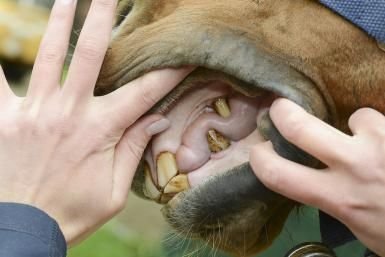On The Range
Sharing the Range
The Great Basin Collared Lizard! By Deana Kirk
Living amongst the beautiful Virginia Range horses, is one the most well dressed lizards in Nevada. The Great Basin Collared Lizard is aptly named for its distinctive black collars around its neck. They have broad heads and brown and white leopard-like spots. While their bodies range from 2.5 to 4.5 inches in length, their tales are often more than twice that long. Males are more colorful with orange stripes and a throat dewlap that they expand to intimidate predators or attract females.
The most exciting feature of the Great Basin Collared Lizard is their large, strong hind legs. They are one of the only lizards that can run upright using only their hind legs. They are extremely fast and each step can stretch as much as three times their body length. This speed helps them escape predators and catch food. Insects, spiders, plants, and other lizards make up a complete diet for the Great Basin Collared Lizard. They use their long claws, powerful jaws, and sharp teeth to get food and even fight off competing males during breeding season. The Virginia Range is happy to be home to these fascinating upright runners!
Did you know?
Fighting teeth! By Deborah Walker
When stallions confront one another this can take on various forms of behaviors from creating poop piles, to smelling flanks and squealing with arched necks and head shakes. Most of the time there isn’t a dangerous or escalated confrontation unless the threatening stallion does not heed the messages the band stallion is sending.
They use all sorts of ways to fight and sometimes it gets pretty brutal. They use their hooves to strike, they rear up and strike, they back up and plant kicks, and they tear at each other with their fighting teeth. They are very sharp and can tear at a neck, a side, the flank … just about anywhere there’s an open target. This is considered an escalated fight situation and each is doing their best to cause the other to back down.
The fighting teeth mentioned are also known as canine teeth and primarily found in male horses with just a few mares sprouting them. They are located between the front grazing teeth and the premolars in the back. They are longer and more pointed than incisors and premolars and are found in the upper jaw primarily but can also be in the lower jaw as well. These teeth are also called “tusks'' and can be up to 5cm long. The primary function of these teeth are for fighting and defending against predators. In the earlier years of a stallion, the budding and development of these teeth can make an impression upon other stallions when they are more developed or longer, establishing an early precedence of dominance.
In the domestic world there is no need for these teeth, but in the wild they are the very essence of survival and dominance.




